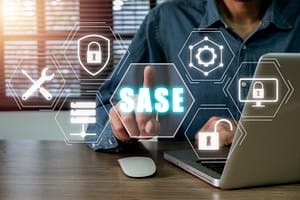With the rise of digital transformation and the increasing use of technology in the workplace, cybersecurity has become a top concern for organizations of all sizes. No longer can companies rely on IT departments alone to keep their data and systems secure. The truth is, cybersecurity is everyone’s responsibility, and it starts with employees being conscious of potential threats and taking the necessary steps to protect their work environment.
In this article, we will discuss why security must be a state of mind for employees, what employees can do to minimize the risk of a cyber attack, and the benefits of a secure work environment.
Why Security as a State of Mind
Cybersecurity is a shared responsibility between employees and IT departments. While IT departments are responsible for implementing and maintaining technical security controls, employees are the first line of defense against cyber threats. This means that employees must be aware of the risks associated with the use of technology in the workplace and take proactive steps to minimize these risks.
For example, employees can minimize the risk of a cyber attack by being mindful of the information they share online, avoiding phishing scams, and keeping their software up to date. By taking these simple steps, employees can help prevent a cyber attack and protect their organization’s data and systems.
What Employees Can Do
There are several steps that employees can take to minimize the risk of a cyber attack:
Be mindful of the information you share online. Don’t share sensitive information, such as login credentials or sensitive data (company or personal), over email or unsecured websites.
Avoid phishing scams. Phishing scams are a common way for attackers to steal sensitive information. Be wary of emails or links from unknown sources and never click on links or download attachments that you did not expect to receive. To find out more about Phishing, review our earlier post on The History and Evolution of Phishing.
Keep your software up to date. Software updates often include security patches that address known vulnerabilities. By keeping your software up to date, you can help protect your computer and your organization’s data and systems. Enabling automatic updates on your computer is a great way to always keep your system updated and secure.
Use strong passwords and multi-factor authentication. Strong passwords and multi-factor authentication provide an extra layer of security for your accounts and can help prevent unauthorized access. It is also best practice to use a different password for every login and not a single password across multiple systems. This will prevent hackers from compromising multiple systems if they discover a password.
Be aware of your physical surroundings. Keep your computer and devices secure and be mindful of who is around you when you enter login credentials or access sensitive information. Remember to lock your computer and phone when you are not using them.
The Benefits of a Secure Work Environment
A secure work environment benefits both employees and organizations. For employees, a secure work environment provides peace of mind and protects their personal information. For organizations, a secure work environment protects sensitive data, helps maintain the trust of customers and clients, and can help avoid costly security breaches.
As the front line in protecting organizations from many cyber threats, security must be a state of mind for employees in today’s workplace. By being aware of potential threats and taking the necessary steps to minimize risk, employees can help create a secure work environment for themselves and their organizations. So, let’s all strive to make security a priority and take an active role in protecting our work environments from cyber threats.
Written by Richard Dial and Michael Brazeau


